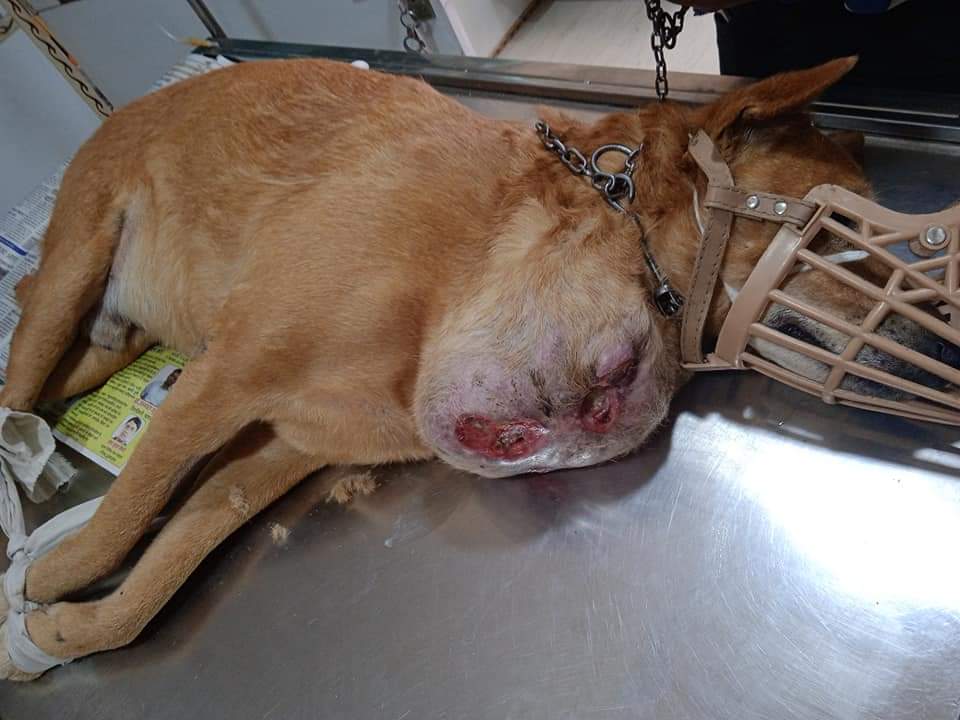SURGICAL TUMOR REMOVAL IN DOG
Dr.Ajeet Singh, Director,Global Veterinary Clinic & Surgical centre, Gorakhpur,UP
The word tumor refers to an abnormal growth of cells that results in a lump forming. However, tumors range widely in significance from harmless growths (described as ‘benign’) to aggressive life-threatening lumps that seed cancer cells to other parts of the body (described as ‘malignant’).
For many lumps, it is best to err on the side of caution and treat them early, so as to reduce the risks should they be malignant. Depending on the type of tumor, the options include surgical removal, chemotherapy, or radiation treatment. Of these, surgical removal is by far the most widely performed and common in first opinion practice.
Surgical Tumor Removal Procedure in Dogs:
For some tumors it’s helpful to know what the cancer is, in order to aid planning the operation. To do this the vet may remove a few cells via a needle and send them for analysis.
For aggressive cancers the vet will ‘stage’ how far advanced the cancer is. This includes checking the draining lymph nodes for evidence of spread, radiographing the lungs for secondary tumors, and scanning the liver.
This information allows the vet to decide if it is appropriate to put the patient through surgery and helps when planning how much tissue to remove.
Typically the patient has blood tests to determine their underlying health and whether supportive intravenous fluids are required during the anesthetic. The dog then receives a premed injection, including pain relief, to prepare them for the anesthetic.
Anesthesia is induced via a catheter in the dog’s leg, and maintained via anesthetic gas supplied through a tube placed in their windpipe.
The area around the tumor is clipped and made sterile with surgical scrub. For internal tumors, the prep is made on the skin where the incision to gain access is made.
The scrubbed and gowned surgeon then removes the lump, with wide margins of tissue around the lump. The incision is closed with sutures, and a dressing applied where appropriate.
Efficacy of Surgical Tumor Removal in Dogs:
The success of surgery depends on:
The type of tumor
How early the tumor was caught
Accessibility
How much tissue was removed from around the tumor
Surgical technique:
For small benign masses, surgery will be curative. When possible, the lump should be sent away for analysis. This not only confirms what type of tumor was present, but checks that ‘clean margins’ were obtained, meaning that enough tissue was removed to reasonably assume the cancer has been eliminated from that area. For large malignant masses, the surgery may not be curative but may ‘debulk’ the tumor and buy the patient some extra time. For many patients, the outlook is good, especially with prior screening to check for complications ahead of surgery. Incomplete removal of an invasive tumor can mean it recurs.
Surgical Tumor Removal Recovery in Dogs:
An average, recovery time from surgery is 10 – 14 days for straightforward cases. During this time the dog must be prevented from licking the operation site by wearing a cone or having the area covered with a dressing. The dog must avoid exertion, which could burst the stitches, and only go on gentle lead walks (as instructed by the vet).
Internal stitches dissolve of their own accord but those in the skin will be removed at 10 – 14 days. Once the results of the lab report are known, the vet will decide if further action is needed. This may include regularly screening to look for recurrence, or further treatments such as chemotherapy or radiotherapy.


